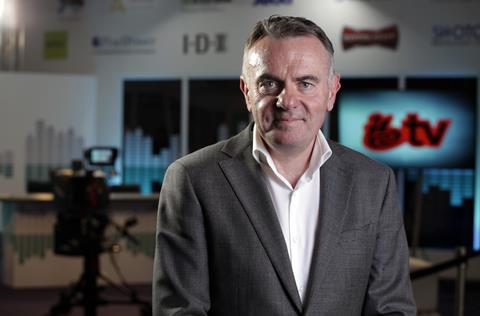While coronavirus may have boosted viewing figures for public service broadcasters, the cancellation of live events and disruption to production on top of the ongoing threat posed by streaming giants and hostile governments combined to make 2020 a challenging year.

It was the best of years and the worst of years for Europe’s public service broadcasters, dominated, as was all of society, by the Covid-19 pandemic.
The good news was that at the peak of the crisis audiences flocked back to the news and current affairs programmes of traditional broadcasters in numbers not seen for years, in search of trusted information.
In general the broadcasters rose to the challenge, often to a remarkable degree, by producing polished programmes remotely from home offices and back bedrooms.
The less good news for broadcasters funded wholly, or in part by advertising, was a near collapse in commercial revenue that typically dropped by as much as 40% almost overnight as country after country went into lockdown.
Read more The state of TV advertising in 2020
While news led the way in the ratings, the halt in new productions and many live programmes because of the virus, led many viewers towards the multinational online streamers such as Netflix and Amazon. It is a trend that is unlikely to go away as more huge US players entered an increasingly competitive international online market.
For some, the defeat of President Donald Trump in the October presidential election in the US represents a high watermark of populist governments. Yet across Europe, including the UK, there are governments which do not seem best disposed to their tradition of public service broadcasting in general and independent critical reporting in particular.
The response of the broadcasters to the main and most immediate threat – the pandemic – and the public response - is well summed up by Tim Davie who became director-general of the BBC in September.
“It’s hard to overstate the shock to the TV sector as the Covid-19 crisis took hold. Production was forced to a halt. Live events were postponed or cancelled. Collapsing ad revenues brought major challenges to the wider market,” says Davie.

Davie, who will lead one of Europe’s largest public broadcasters as it approaches its centenary year in 2022, added: “At the same time, the way audiences responded as the BBC transformed its output, almost overnight, to meet the needs of the nation was incredible. They came to us in their millions, as much for news and information as for advice, companionship and escapism. It was a real tribute to the essential role of public service broadcasting.”
The rediscovery of that essential role, which raised the morale and sense of purpose of the often-battered PSBs across Europe, was seen at its most intense in news and current affairs.
Case studies on what happened in 20 of Europe’s public broadcasters were featured in research commissioned by the European Broadcasting Union in a major report – Fast Forward: Public Service Journalism in the Viral Age. Published in November the report highlighted both the challenges and the response of viewers.
As the report found, broadcasters had to find their way around everything from addressing fake news, covering conflicting scientific judgements and coping with extensive data. Then there were the practicalities of rescheduling, hybrid working and staff safety.
For SVT head of programming Charlotta Friborg the realisation that the broadcaster could change so quickly brought a sense of empowerment. And Jon Williams, head of news and current affairs at RTE, Ireland was amazed by the broadcaster’s new-found ability “to do radical things.” While Helje Solberg, director of news at NRK Norway, noted the strengthening of the broadcaster’s position with young people, an opportunity going forward.
All over Europe the audience response was strong across all demographics. Audiences to the main evening news bulletins rose by an average of 20% but the rise among children was 77%, 15-24-year-olds viewing was up by 44% while the increase among young adults was 53%.
The rise in viewing numbers was matched by high levels of trust for public service broadcasters. But there were signs that the phenomenon levelled off after a couple of months as viewers began to regard the pandemic as the new normal.

Noel Curran, director general of the EBU saw 2020 as “a year for both reinvention and rediscovery ”for Europe’s public media and one in which audiences in turn have rediscovered public service media and its mission to inform, educate and entertain.
That optimistic outlook may be well founded but there is equally no doubt that Europe’s public media will face years of intensifying competition from well-funded international players increasingly turning to streaming.
On top of Netflix, Amazon and Apple there is now Disney + and NBCUniversal’s Peacock with a host of others on the way such as a new hybrid streaming service from Discovery and Time Warner’s HBO Max.
There may be a law of diminishing returns but each new service will increase pressure on the ratings of traditional broadcasters.
- Listen The IBC Podcast: Noel Curran
David Graham, chief executive of Attentional, an audience research company, notes that in January, the last “normal” month, UK audiences spent one hour seven minutes watching non-traditional television.
“Covid-19 has accelerated the existing trend and if there is a retreat from that trend it will be modest, ”predicts Graham who expects such viewing to rise to 1 hour 39 minutes during 2021, an increase of 48%.
The political and financial pressure on public service broadcasters is illustrated tellingly by the current plight of the BBC.
Prime Minister Boris Johnson, perhaps inspired by his main advisor Dominic Cummings – recently departed - expressed hostility to the BBC and for several months even prevented ministers appearing on Radio 4’s flagship Today programme.
Johnson claimed that the BBC had agreed to fund free licence fees for the over 75s something that would cost the Corporation £750 million a year rising to £1 billion in an ageing population.
In fact, the BBC had been offered the difficult choice of deciding what to do about the issue after the Government declined to continue paying for what is essentially a welfare matter.
“The rediscovery of that essential role raised the morale and sense of purpose of the often-battered PSBs across Europe”
After a consultation the BBC decided it would offer free licences only to those homes where someone received pension support, but even this will cost around £150 million a year.
Even more seriously, Johnson, supported by 150 of his backbench MPs, appeared to be keen on decriminalising the licence fee five years after an independent study found it to be fair and proportionate.
Decriminalisation would cost the BBC an estimated £200 million a year- a number that could grow if more and more people thought they could get away without paying.
Director-general Davie believes this plan has been dropped – at least for now - but the BBC is still facing a review on the level and structure of the licence fee which provides the vast majority of its funding.
Optimistic outlook
All five of the UK’s PSBs have asked for help from the Government in the battle against the streamers by ensuring that their channels receive prominence on smart TV programme guides and that PSB channels must be carried on all new devices.
Despite the obvious challenges of 2020 there are some grounds for optimism; as effective vaccines started to arrive the outlook for TV advertising improved.
Maria Kyriacou, president of ViacomCBS Networks for the UK and Australia which includes Channel 5 is optimistic about the future.
Apart from the obvious fall in advertising revenue Channel 5 had a good year by increasing investment in original PSB programmes. The channel grew its market share by 5% and won several channel of the year awards.
“Looking ahead, we’re hopeful of a recovery in the advertising market next year and intend to build on this strong year for the channel with a particular focus on innovation for our VOD platform My5 which experienced a 50% growth in streams this year,” says Kyriacou.
Many of Europe’s public service broadcasters will be making similar plans for 2021.



























No comments yet